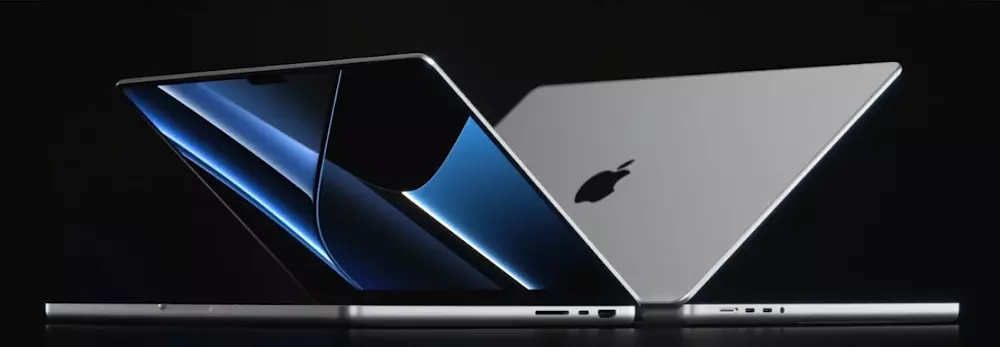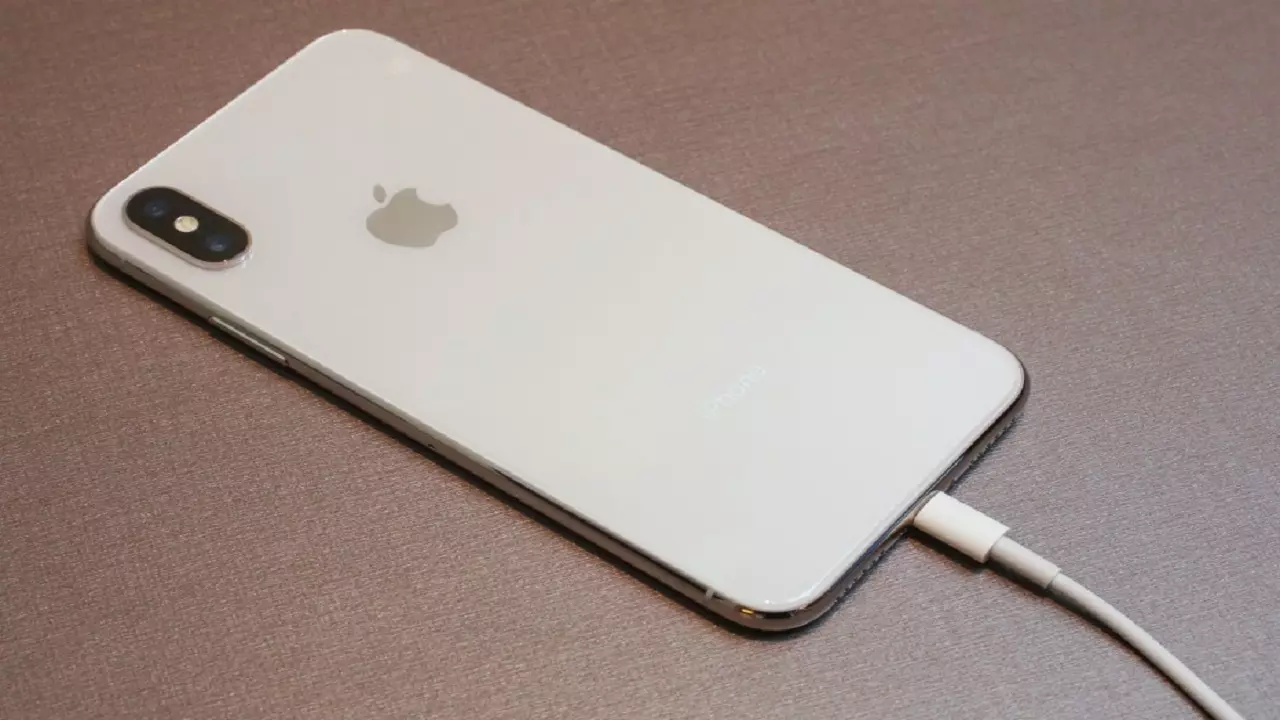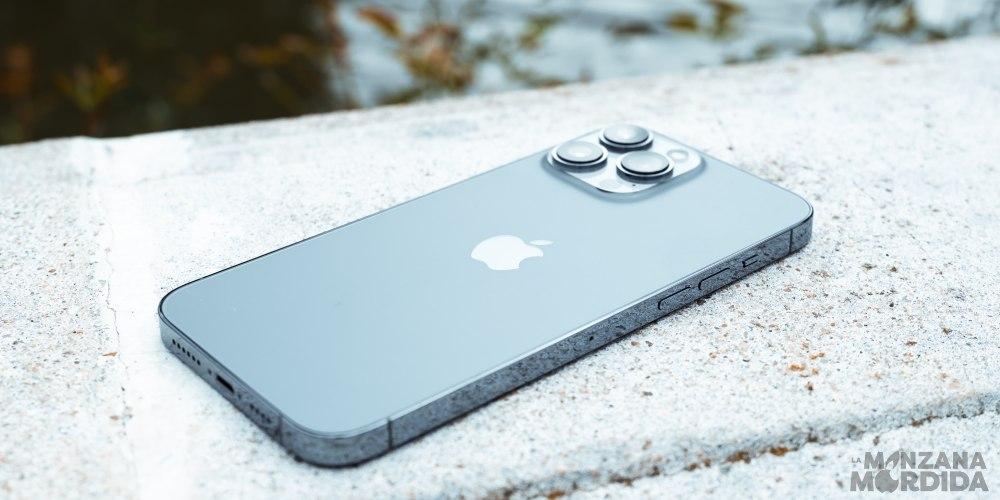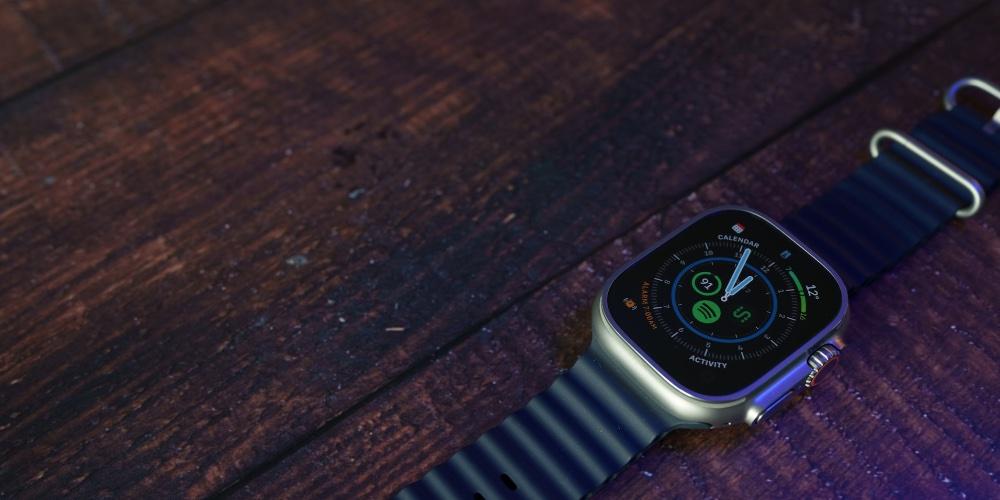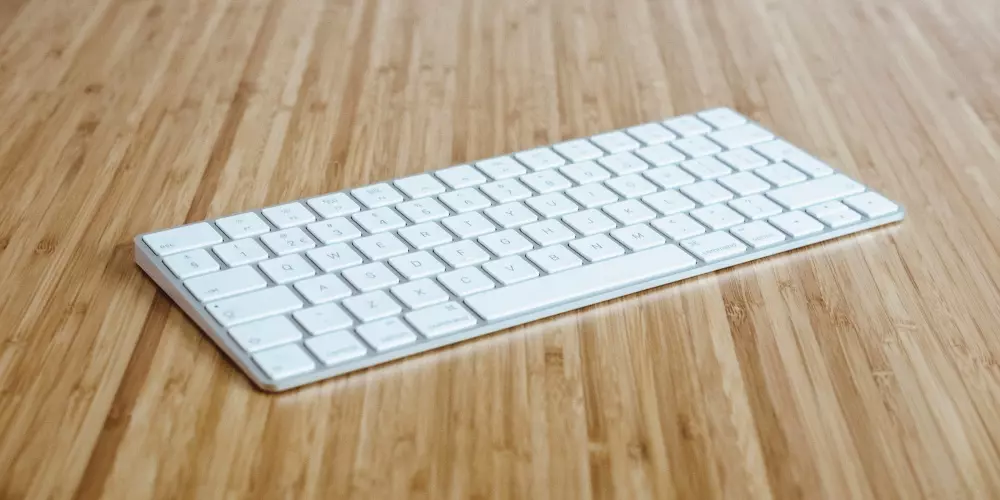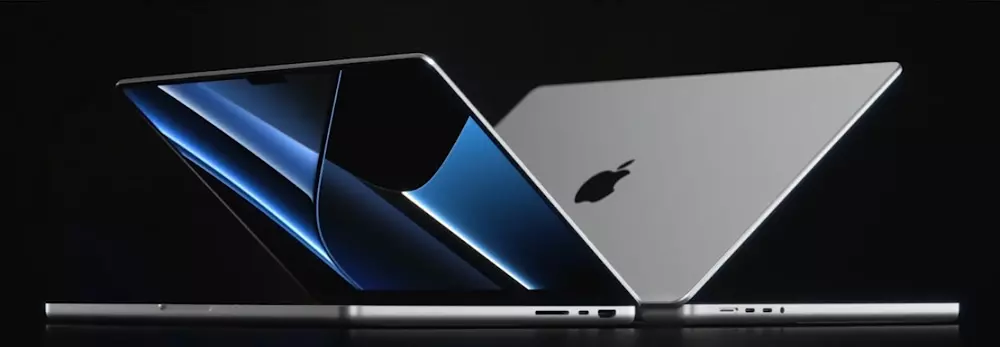
About countries where they are manufactured we find China and South Korea, which are precisely the headquarters of the aforementioned manufacturers. Although in the end its assembly in the Mac is usually carried out in other different factories, since it is necessary to differentiate the manufacturing process of components and their assembly, for which we already find other companies such as Foxconn with plants in several countries, but mainly in China.
In any case, it is important to note that in the end the manufacturers do not have decision-making power. That is it is Apple who controls the whole process, since the company seeks to have panels with certain specifications and, based on this, chooses the supplier that offers the best conditions. Hence, in the end, they are not always identical panels to those that these manufacturers offer for other brands or for their own.
What does True Tone and ProMotion mean?
These two concepts will appear in the specifications section of some of the Macs that we are going to detail in this post and, if you are not familiar with them, it is normal that you have some doubts about what they mean. And, despite referring to common technologies, they are terms used by Apple itself to refer to them and can generate confusion.
With respect to meaning of True ToneThis is a feature that several brand teams integrate and through which it is a matter of giving the user a rest from sight. For this, a series of sensors capable of detecting ambient lighting are used and adjusting both the color and the brightness to that situation. Of course, it is a function that makes you lose realism according to what colors and it may not be advisable to always use it.
Regarding ProMotion featuresThese basically refer to panels that have refresh rates of up to 120 Hz, when normal is usually 60 Hz. This refresh rate refers to the number of times the screen content is updated per second, giving a greater sense of fluidity the higher it is. Like True Tone, Apple also includes ProMotion displays in other ranges such as iPhones and iPads.
Apple computers that come without a screen
You should know that not all Apple computers come with a screen, since there are two desktop ranges that do not have a screen in their box or attached to the CPU unlike MacBook or iMac. Those are the Mac mini Y Mac Pro.
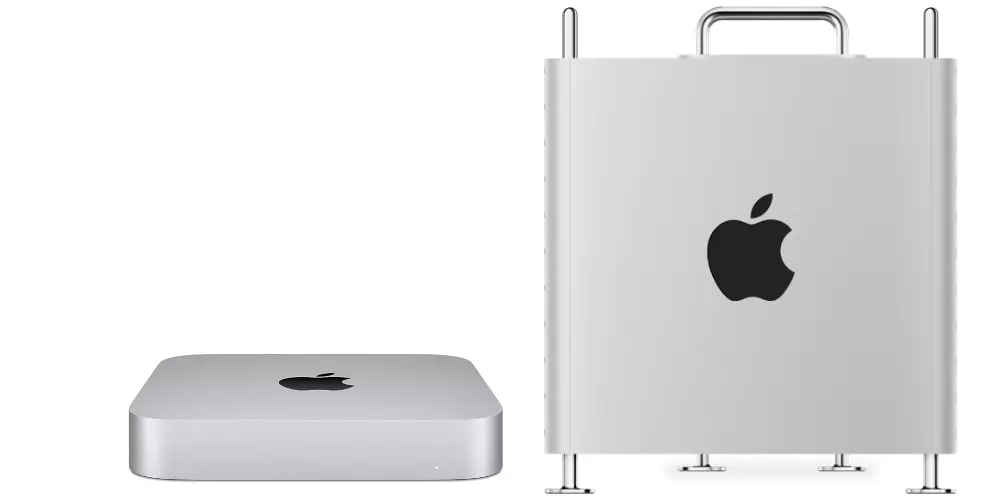
Mac mini (2020) and Mac Pro (2019)
And no, obviously this does not mean that they can be used without a screen. What happens is that these must be purchased separately, either the official option that Apple gives with the Pro Display XDR or from any other brand, as long as it is compatible. In any case, it is important to know that if you are going to get one of those mentioned Mac, you will have to have a separate monitor.
However, How many monitors and of what type can they be connected? Here is the answer on the models currently on sale:
- Mac mini: 2 monitors up to 6K with 60 Hz.
- Mac Pro: 4 monitors up to 6K with 60 Hz (depending on the graph that is configured)
Pro Display XDR, the official Apple screen
As we have already advanced previously, this is a independent display from Apple. It was launched in 2019 as a complement to the Mac Pro of that year, although it did not come standard with this equipment and in the same way it can be purchased separately to use it with any other Mac and even devices such as iPad or Windows PC. However, its aesthetic line is in the same line as that mentioned Mac Pro.
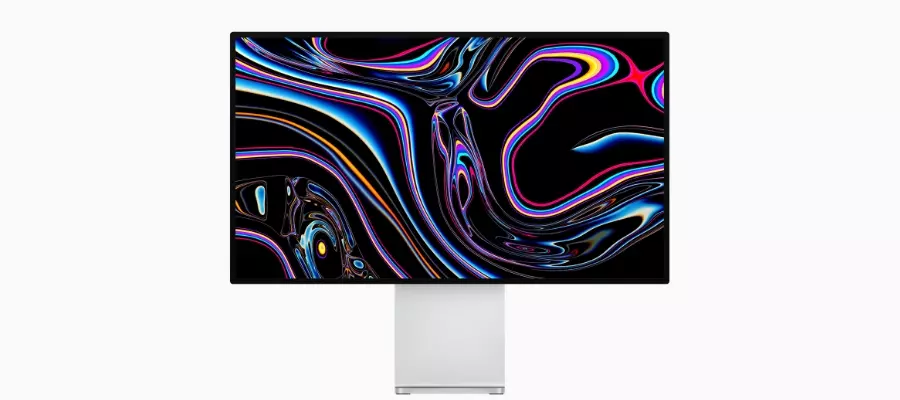
Pro Display XDR (2019) screen
At the level of technical specifications we find these data to highlight:
- Technology: IPS LCD
- Size: 32-inch diagonal
- Aspect ratio: 16: 9
- Resolution: 6K with 6,016 x 3,384 at 218 pixels per inch
- Sparkle: 1,000 nits with 1,600 nits max (500 nits on SDR) and True Tone technology
- Colors: P3 wide color gamut with 10-bit depth and up to 1.073 million colors
- Refresh rate: up to 60 Hz
It should be noted that its high-end materials include being able to configure a nanotextured glass that in addition to providing protection to the screen, it also helps to efficiently maintain its contrast.
The screen as such is sold individually without accessories such as the base or the VESA mounting adapter, which are sold separately for 1,099 and 219 euros respectively. The screen itself is priced at 5,499 euros in its version with standard glass and 6,499 euros with the already mentioned nanotextured glass.
Tabletop Specifications
Among Apple’s desktops, and once the Mac mini and Mac Pro have been discarded for not having a screen, we only find the iMac range. Currently this is divided into two, differing precisely by the size of its screen, but also by chip and design in general.
iMac (M1)
This computer launched at the beginning of 2021 incorporated interesting changes with respect to its predecessors, its screen being the main protagonist. It is the main protagonist of the team and has reduced bezels in white and a lower chin in which the hardware elements of the Mac itself are located.
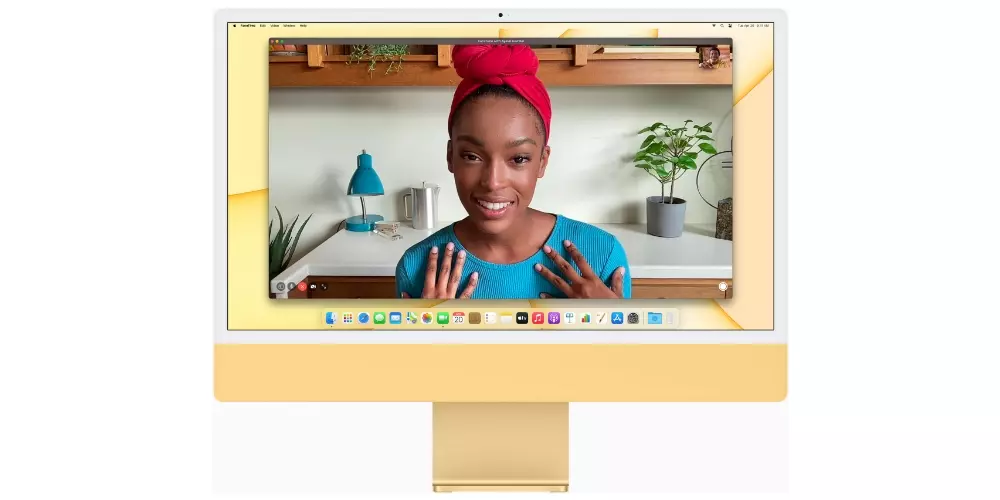
iMac (M1) (2021)
These are the main features of the screen of this iMac M1:
- Technology: IPS LCD
- Size: 23.5-inch diagonal *
- Aspect ratio: 16: 9
- Resolution: 4.5K with 4,480 x 2,250 at 218 pixels per inch
- Sparkle: 500 nits and True Tone technology
- Colors: wide P3 color gamut with 1 billion colors
- Refresh rate: up to 60 Hz
*Note: Although it is popularly known as a 24-inch iMac, it really is to be rounded, since the correct measurement is 23.5.
Dingo of mention is the compatibility with other displays that this iMac has, to which an external monitor with a resolution up to 6K at 60 Hz can be connected.
iMac (Intel)
This equipment popularly known as the “large iMac” or the “iMac 27”, maintains the classic aesthetic of this range, with pronounced black bezels around the screen and a pronounced silver chin in which the characteristic logo Apple is still present (in the M1 it is not). It was released in mid 2020.
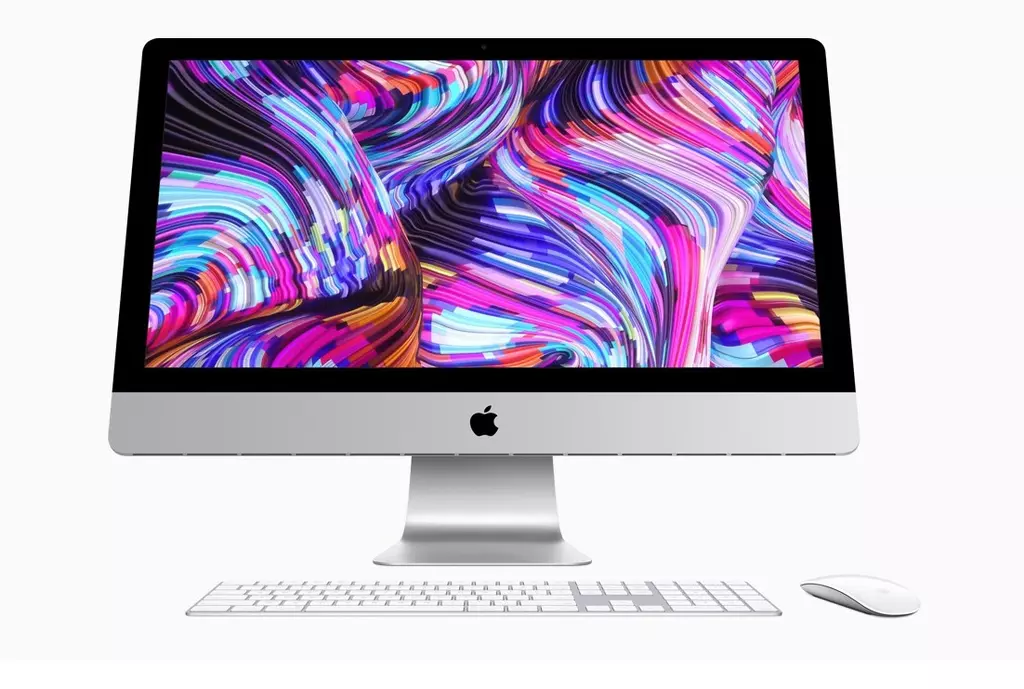
iMac (Intel) (2020)
Although its screen falls short of the Pro Display XDR level, it beats the iMac M1 and even offers some variants of that aforementioned standalone screen that Apple sells. Its most outstanding characteristics are these:
- Technology: IPS LCD
- Size: 27-inch diagonal
- Aspect ratio: 16: 9
- Resolution: 5K with 5,120 x 2,280
- Sparkle: 500 nits and True Tone technology
- Colors: wide P3 color gamut with 1 billion colors
- Refresh rate: up to 60 Hz
It must be said that, like the ProDisplay XDR, this iMac allows to add nanotextured glass in your purchase options. Of course, this represents an increase of 345 euros in the price of the equipment.
Regarding your compatibility with other monitors, this allows connection to an external monitor up to 5K @ 60Hz.
Specifications on MacBook laptops
We are already in the range of Apple laptops in which there are smaller screens than in the desktop for obvious reasons (portability). However, we find extremely interesting specifications, especially in the most recent models.
MacBook Air and MacBook Pro (M1)
Although inside they have several differentiated specifications, at the design level they share an identical screen in all aspects. Both launched at the end of 2020 as the first with M1, they in turn start from a design that was already continuous with a front starring the screen, although with notable black bezels.
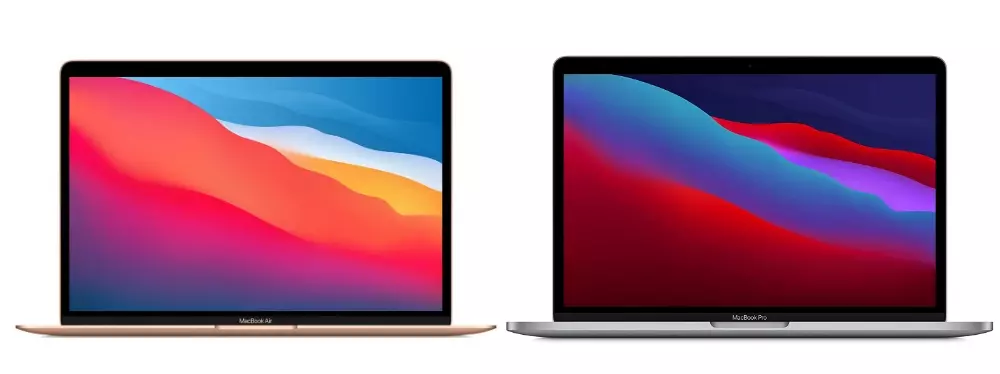
MacBook Air and MacBook Pro (M1) (2020)
Its specifications are as follows:
- Technology: IPS LCD
- Size: 13.3-inch diagonal
- Aspect ratio: 16: 9
- Resolution: 1,080p at 2,560 x 1,600 at 227 pixels per inch
- Sparkle: 500 nits and True Tone technology
- Colors: wide P3 color gamut with 1 billion colors
- Refresh rate: up to 60 Hz
Regarding the possibility of connecting external monitors For simultaneous use or screen mirroring, these kits allow you to connect a 6K monitor up to 60Hz.
MacBook Pro (M1 Pro / M1 Max)
In this case we find two models of notebook that differ precisely by the size of the screen. Both launched at the end of 2021 with evolutions of the M1 chip such as the M1 Pro and M1 Max, they have a design in which, now, the screen is the absolute protagonist without having hardly any bezels, although with the presence of a notch on the the camera is located.
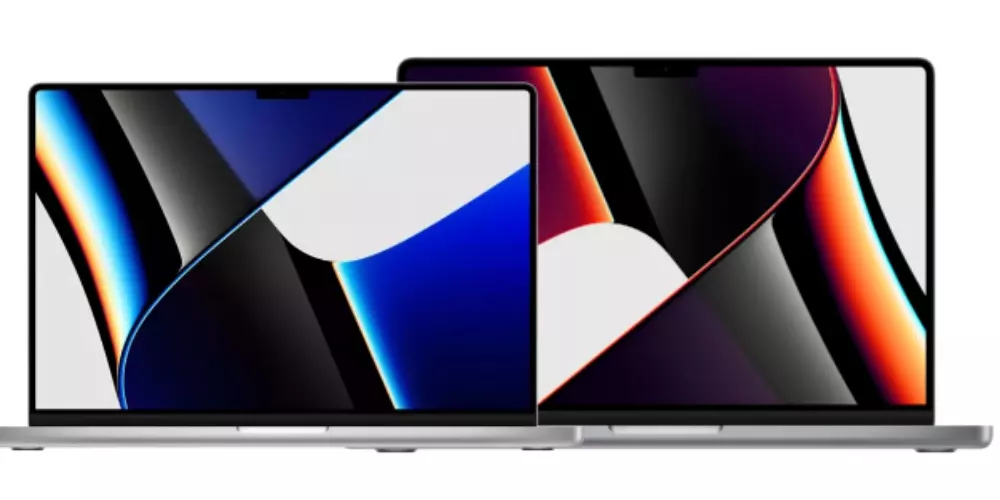
MacBook Pro (M1 Pro / M1 Max) (2021)
The characteristics they have are the following:
- Technology: LCD-miniLED
- Size:
- 14 ″ model – 14.2-inch diagonal
- 16 ″ model – 16.2-inch diagonal
- Aspect ratio: 16: 9
- Resolution:
- 14 ″ model: 3,024 x 1,964 at 254 pixels per inch
- 16 ″ model: 3,456 x 2,234 at 254 pixels per inch
- Sparkle: 1,000 nits and 1,600 nits maximum with True Tone technology
- Colors: wide P3 color gamut with 1 billion colors
- Refresh rate: up to 120 Hz (ProMotion)
According to the monitor compatibility External, these support up to 2 displays up to 6K with 60Hz refresh rates.
Which Mac has a better screen?
Given the layout of Apple computers, it doesn’t take much to find a winner. It is true that in the end it is not necessary to have the most advanced panel to enjoy a good experience, but if what you are looking for is excellence, there is no doubt that Pro Display XDR it is by far the one that offers the best possibilities.
Now, if you are looking for a Mac as such that already has the integrated screen, the MacBook Pro 2021 they are the ones that offer the highest quality panels. In fact, they are very similar to the Pro Display XDR in quality and it could be said that they even surpass it in some sections such as the refresh rate, since they are capable of reaching rates of up to 120 Hz, with the rest being 60 Hz. from Mac.
